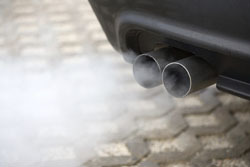Real-time monitoring of exhaust gases
Gone are the days of the single-car family. Most families now have at least two cars, one for each parent, and some may even have more if children of driving age are still living at home. In addition to the growing number of cars on the road, the demand for global products has led to ever-increasing cargo-truck traffic as well. One of the ways to decrease pollution caused by the burning of fossil fuels is to ensure efficient combustion processes. Careful monitoring of exhaust gases with real-time feedback would enable corrections in a timely fashion. With funding for the OPTO-EMI-SENSE project, a European consortium of four academic institutions, a small company and a car manufacturer set out to develop fibre-optic sensing technology for the most important exhaust gases. Exhaustive research into optical sensors for exhaust gases led to development of a fully integrated system for numerous pollutants. The system was based on the gas filter correlation (GFC) technique that minimises cross-sensitivity and the resulting interference common for multi-component gases. The sensor detected nitric oxide and nitrogen dioxide (NO and NO2, respectively), carbon monoxide and dioxide (CO and CO2, respectively) and numerous hydrocarbons as well as exhaust gas temperature. The OPTO-EMI-SENSE system was installed in the trunk of a test car specifically selected for its technical characteristics including a catalysed diesel particulate filter required for maintaining sensor integrity. The fully operational demonstrator produced results in excellent correspondence with those delivered by commercial instrumentation. Marketing of the OPTO-EMI-SENSE system will enable drivers to have real-time feedback on exhaust gases and thus facilitate timely service in the case of pollutant emission. Reducing emissions and burning fuel more efficiently could have important benefits for consumers and help the EU to reach its goal of sustainable surface transport.







